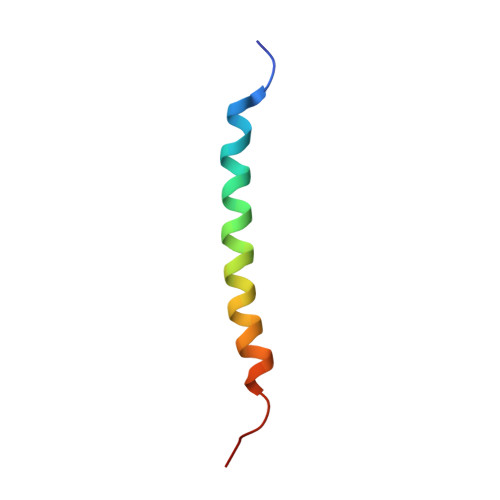Higher-Order Clustering of the Transmembrane Anchor of DR5 Drives Signaling.
Pan, L., Fu, T.M., Zhao, W., Zhao, L., Chen, W., Qiu, C., Liu, W., Liu, Z., Piai, A., Fu, Q., Chen, S., Wu, H., Chou, J.J.(2019) Cell 176: 1477-1489.e14
- PubMed: 30827683
- DOI: https://doi.org/10.1016/j.cell.2019.02.001
- Primary Citation of Related Structures:
6NHW, 6NHY - PubMed Abstract:
Receptor clustering on the cell membrane is critical in the signaling of many immunoreceptors, and this mechanism has previously been attributed to the extracellular and/or the intracellular interactions. Here, we report an unexpected finding that for death receptor 5 (DR5), a receptor in the tumor necrosis factor receptor superfamily, the transmembrane helix (TMH) alone in the receptor directly assembles a higher-order structure to drive signaling and that this structure is inhibited by the unliganded ectodomain. Nuclear magnetic resonance structure of the TMH in bicelles shows distinct trimerization and dimerization faces, allowing formation of dimer-trimer interaction networks. Single-TMH mutations that disrupt either trimerization or dimerization abolish ligand-induced receptor activation. Surprisingly, proteolytic removal of the DR5 ectodomain can fully activate downstream signaling in the absence of ligand. Our data suggest a receptor activation mechanism in which binding of ligand or antibodies to overcome the pre-ligand autoinhibition allows TMH clustering and thus signaling.
Organizational Affiliation:
Department of Biological Chemistry and Molecular Pharmacology, Blavatnik Institute at Harvard Medical School, 250 Longwood Avenue, Boston, MA 02115, USA.














